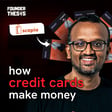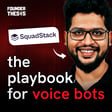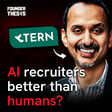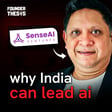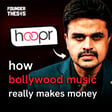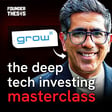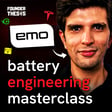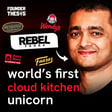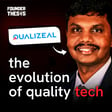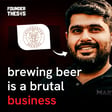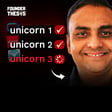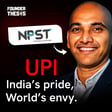
The Science Behind Building Beauty Brands | Anurag Kedia (Pilgrim)
"What does it really take to build a D2C brand from zero in today's market?"
This episode unpacks the challenging yet rewarding journey of building a D2C brand with Anurag Kedia. Go beyond the headlines and learn about the grit, strategic decisions, and relentless execution required to take an idea like Pilgrim from concept to reality.
Anurag Kedia is the Co-Founder of the D2C beauty brand Pilgrim. With over 20 years of rich experience spanning marketing, strategy, and entrepreneurship, Anurag is an alumnus of prestigious institutions like IIM Ahmedabad and IIT Bombay. His track record includes achievements like scaling e-commerce businesses with 100% year-on-year growth, tripling customer bases, and significantly reducing customer acquisition costs in his previous leadership roles.
Key Insights from the Conversation (Based on likely topics):
- The Grit Required: Navigating the founder's journey from zero to one.
- Building Pilgrim: Translating vision into a tangible D2C reality.
- Finding Product-Market Fit in the competitive beauty landscape.
- Key Levers: Marketing and operational strategies for scaling D2C.
- Building Moats: Creating sustainable advantages in D2C.
- Lessons from a diverse career journey across multiple sectors.
Chapters:
00:00 Introduction: Anurag Kedia & The Pilgrim Story
01:41 Growing Up & Early Influences in Bilaspur
04:48 IIT Bombay & IIM Ahmedabad Journey
10:31 First Venture: Ideation & Founding Four Fountains Spa
13:51 Funding & Building the Spa Business
24:02 Scaling & Exiting Four Fountains
30:19 The 'Why' Behind Starting Pilgrim
44:50 Finding a Co-Founder & Building the Team
50:01 Raising Funds: Angels & Fireside Ventures
59:03 Launching Pilgrim Amidst Lockdown & Rapid Growth
1:04:10 Pilgrim's Strategy: Global Beauty & Niche Focus
1:26:33 Anurag's Advice: Marathon, Not Sprint
Hashtags:
#AnuragKedia #Pilgrim #FounderThesis #D2C #DirectToConsumer #BeautyBrand #StartupIndia #Entrepreneurship #MarketingStrategy #Branding #Scaling #IIMAhmedabad #IITBombay #Podcast #BusinessPodcast #MakeInIndia #ZeroToOne #IndianStartups #D2CBusiness
